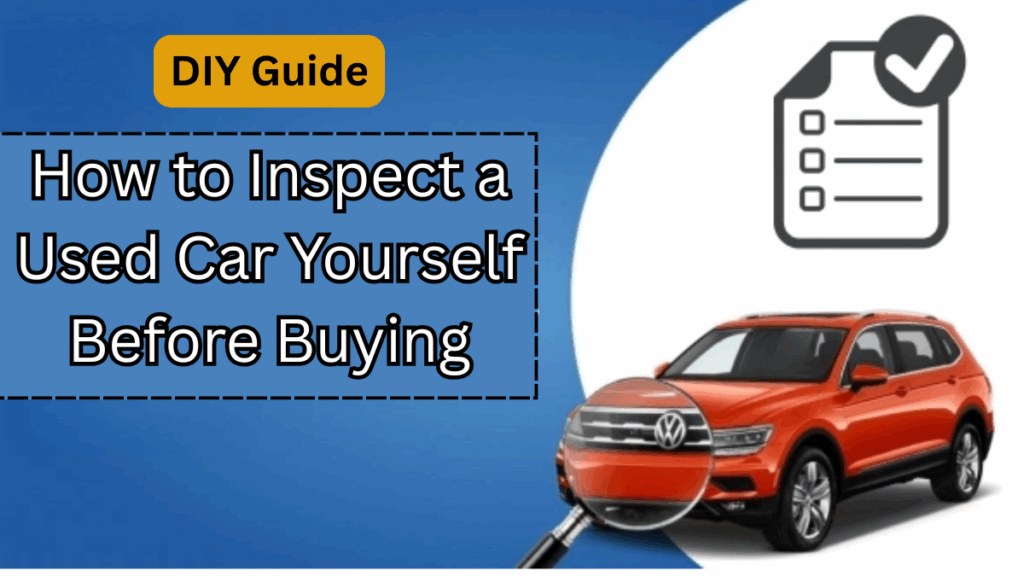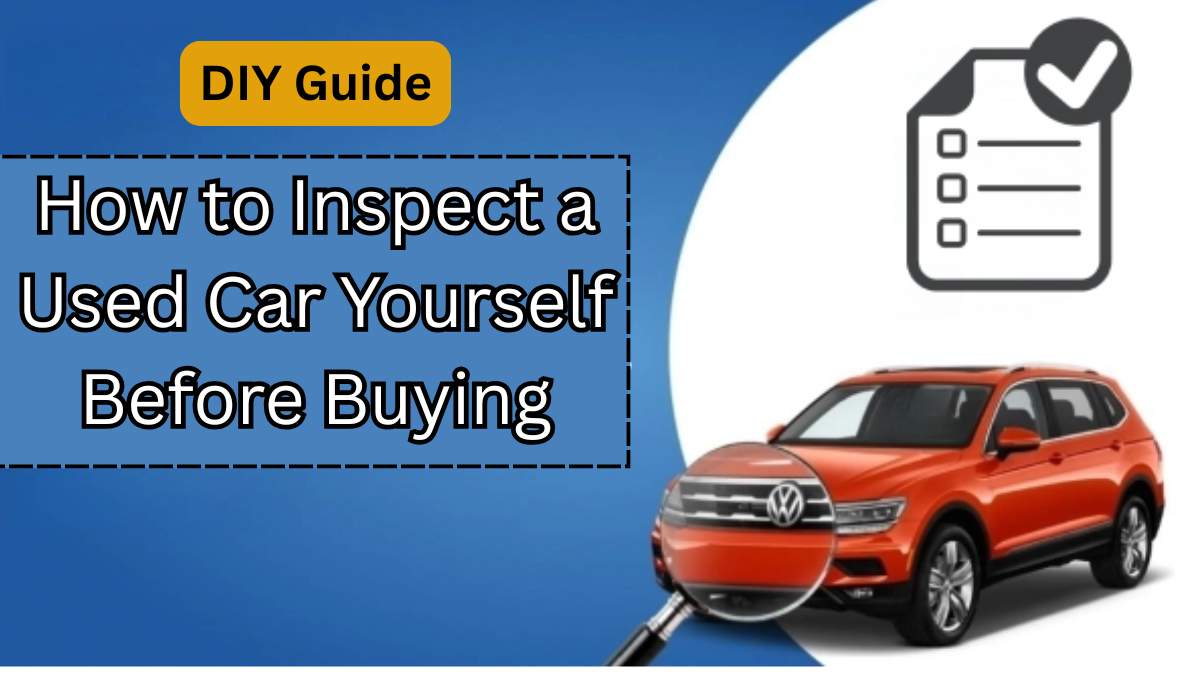Buying a used car can save you a lot of money, but it also comes with risks. Without proper checks, you could end up with hidden problems that cost more than the car itself. This is where DIY Used Car Inspection Tips come in handy. With the right approach, you can confidently assess the vehicle’s condition before committing.
If you’re wondering How to Evaluate Used Cars by Yourself, this guide is for you.

Why Inspecting a Used Car Yourself Matters?
When buying a used vehicle, every detail counts. A DIY inspection:
-
Saves money on mechanic pre-checks (though a final professional check is still recommended).
-
Helps you spot obvious issues before negotiating.
-
Gives you confidence in your purchase.
Step-by-Step DIY Used Car Inspection Tips
Check the Exterior
Walk around the car and look for:
-
Dents, scratches, and mismatched paint (possible accident repairs).
-
Rust spots, especially around wheel arches and under the doors.
-
Condition of headlights, tail lights, and mirrors.
Inspect the Tires & Wheels
-
Uneven tire wear may indicate poor alignment or suspension issues.
-
Check the spare tire and jack.
-
Examine wheels for cracks or bends.
Open the Hood
This is where many problems hide. Look for:
-
Oil leaks or dirty oil (pull out the dipstick and check the oil color).
-
Corrosion around the battery terminals.
-
Loose or cracked belts and hoses.
Examine the Interior
Inside the car, pay attention to:
-
Seat condition (tears, stains, or unusual wear).
-
Dashboard warning lights (turn the key to “ON” and see if all lights work).
-
AC, heating, windows, and infotainment system.
Take It for a Test Drive
During your drive:
-
Listen for unusual noises (grinding, knocking, or squeaking).
-
Test brakes for responsiveness.
-
Check steering for smoothness and stability.
Quick DIY Used Car Inspection Checklist
Here’s a simplified checklist you can carry with you:
| Area to Inspect | What to Look For |
|---|---|
| Exterior | Rust, dents, paint mismatch, lights |
| Tires & Wheels | Uneven wear, cracks, spare availability |
| Engine Bay | Leaks, oil quality, battery corrosion |
| Interior | Seats, electronics, dashboard warnings |
| Test Drive | Noises, braking, steering response |
Using this table makes How to Evaluate Used Cars by Yourself much easier, helping you stay organized during inspections.
When to Call a Mechanic
While a DIY inspection is powerful, always get a trusted mechanic’s opinion before finalizing. They can identify deeper mechanical or structural issues that aren’t easily visible.
FAQs
1. Can I skip a professional inspection if I do a DIY check?
It’s not recommended. A DIY check helps spot obvious problems, but a mechanic can uncover hidden issues.
2. What tools do I need for a DIY car inspection?
You don’t need much—just a flashlight, paper towels, and a checklist.
3. How long does it take to inspect a used car yourself?
Around 30–45 minutes if you follow a proper checklist.
4. Can I use these tips for any type of vehicle?
Yes, these DIY Used Car Inspection Tips work for most cars, whether sedans, SUVs, or hatchbacks.
Click here to learn more
